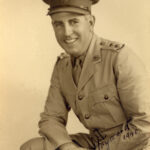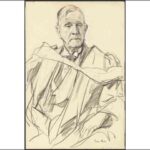Late in 1938, with Europe on a war footing, Prime Minister Joseph Lyons began moves to shore up Australia’s long-neglected defences. Responding to earlier overtures from South Australian Premier Richard Butler to decentralise defence industries in this state, Lyons asked members of the Adelaide industrial and commercial establishment to set up a pilot branch of a proposed National Defence League (NDL). The league, to be a co-ordinating centre for voluntary civilian effort, was inaugurated at a well-attended public meeting in the Adelaide Town Hall on 14 December, following a military parade to whip up patriotic fervour.
A 33-member ‘general’ committee, comprising representatives of 80 community organisations, was formed immediately. Surveys by various subcommittees on recruiting, manpower organisation, strategic location of secondary industries, control of primary production and coordination of civilian effort revealed shortcomings in the war effort. However, following Lyon’s death in April 1939 federal government support waned and the newly formed State Civil Defence Council assumed responsibility for most of the league’s areas of interest. The wealthy Adelaide businessman and league president, Edward Hayward, wrote to Premier Tom Playford offering to place the organisation at the state’s disposal, along with six months’ paid services of a secretary. While Playford accepted that same day and put on record his government’s appreciation ‘of your organization’s fine patriotic work at a time when so little was being done for the defence of our country’ (Advertiser, 16 May 1938), the league faded.
A member of the NDL executive, Sir Henry Newland, chaired the South Australian branch of another National Defence League, inaugurated at Parliament House on 27 October 1941 to educate the public on the necessity of conscription. An even earlier NDL had been formed in Adelaide around 1891 to counter state socialism, organised labour and proponents of a single tax scheme.






Comments